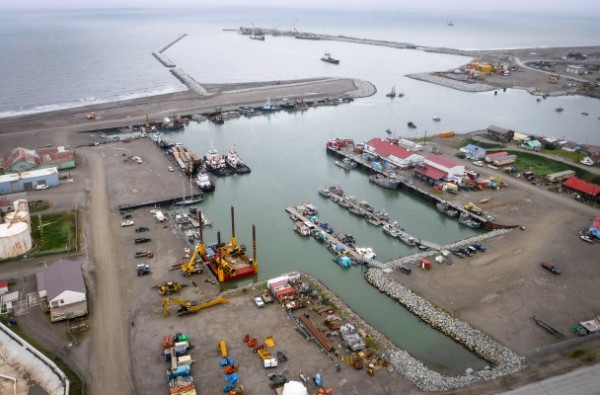
Alaskans can now comment on the U.S. Army Corps of Engineers’ newest feasibility study for a potential deep-draft port in Nome.
On the last day of 2019, the Corps released an updated study, citing its purpose as a way to “identify a feasible solution that provides safe, reliable, and efficient navigation and mooring for vessels in the Nome area.”
This new draft follows a previous feasibility study the Corps put out to the public in May of 2019. One of the significant design changes since May acknowledges that project construction could have an effect on various marine mammals.
For example, the latest draft report suggests using a sheet pile dock instead of a concrete caisson dock, which would cause higher noise impacts than initially anticipated, during construction, due to the pile-driving work required.
As this is still just a draft, the feasibility study has several plans to choose from. Out of the seven alternatives carried forward, including a no action option, the recommended plan is “Alternative 8b”.
According to the Corps, this plan would dredge a deep-water basin to minus 40 feet and an outer basin to minus 28 feet with other marine infrastructure projects included. Currently, the Port of Nome’s outer basin is limited to minus 22 feet, which can only safely accommodate vessels of drafts less than approximately 18 feet.
The recommended plan for Nome’s deep draft port comes with an estimated total cost of $491 million. There will be paper copies of the Corps’ feasibility study available at Nome’s City Hall and Port office.
Written comments from the public, via email or mail, will be accepted on the newest feasibility study until Jan. 30. You can submit comments via email to Brent.S.Howard@usace.army.mil.
Davis Hovey is a news reporter at KNOM - Nome.
Hovey was born and raised in Virginia. He spent most of his childhood in Greene County 20 minutes outside of Charlottesville where University of Virginia is located.
Hovis was drawn in by the opportunity to work for a radio station in a remote, unique place like Nome Alaska. Hovis went to Syracuse University, where he graduated with a Bachelor’s of Science in Broadcast Digital Journalism.




